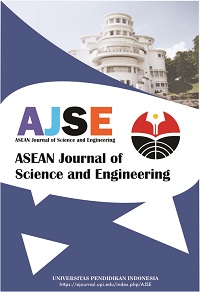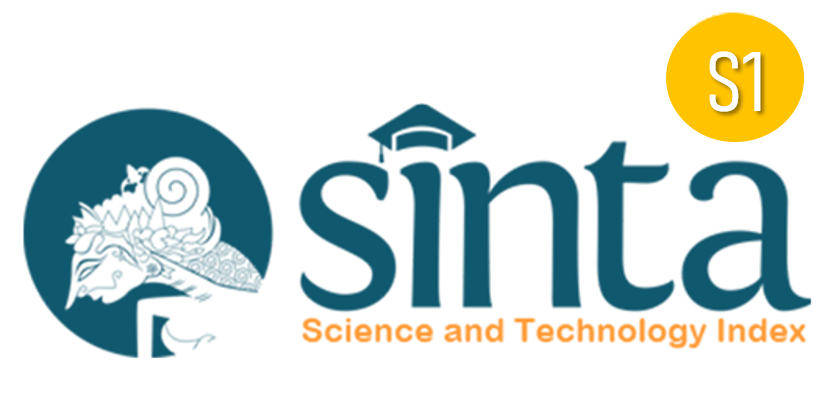Anthocyanins from Agro-waste as Time-Temperature Indicator to Monitor Freshness of Fish Products
Abstract
Fish products perish easily due to microbial contamination. Uncontrolled thawing will increase the rate of microbial activity at every 10°C increase in temperature. One of indicator that can detect food quality is the time-temperature indicator (TTI) with changes in pH. However, these indicators are generally made of synthetic chemicals which tend to pollute the environment. This study aimed to summarize various studies on anthocyanins from agro-waste as time-temperature indicator to monitor freshness of fish products. This research used systematic literature review (SLR) from various relevant research and resources. The SLR process includes practical screening, quality appraisal, synthesizing, and reviewing. Anthocyanins derived from agro-waste than can be developed into TTI are purple yam peel, black plums peel, blueberries peel, rambutan peel, sweet potato peel, dragon fruit peel. The TTI from agro-waste anthocyanins can be developed to monitor freshness of fish products.
Keywords
Full Text:
PDFReferences
Apriliyanti, M. W., Wahyono, A., Fatoni, M., Poerwanto, B., and Suryaningsih, W. (2018). The Potency of betacyanins extract from a peel of dragon fruits as a source of colourimetric indicator to develop intelligent packaging for fish freshness monitoring. IOP conference series: Earth and environmental science, 207(1), 012038.
Aquino, A. M., and Morales, D. B. (2021). Development and characterization of cassava starch films incorporated with purple yam (Dioscorea alata L.) peel anthocyanins. Food Research, 5(1), 108-113.
Arruda, H. S., Silva, E. K., Peixoto Araujo, N. M., Pereira, G. A., Pastore, G. M., and Marostica Junior, M. R. (2021). Anthocyanins Recovered from Agri-Food By-Products Using Innovative Processes: Trends, Challenges, and Perspectives for Their Application in Food Systems. Molecules, 26(9), 2632.
Arvanitoyannis, I. S., and Kassaveti, A. (2008). Fish industry waste: treatments, environmental impacts, current and potential uses. International journal of food science & technology, 43(4), 726-745.
Bilgiç, S., Söğüt, E., and Seydim, A. C. (2019). Chitosan and starch based intelligent films with anthocyanins from eggplant to monitor pH variations. Turkish Journal of Agriculture-Food Science and Technology, 7(sp1), 61-66.
Bobelyn, E., Hertog, M. L., and Nicolaï, B. M. (2006). Applicability of an enzymatic time temperature integrator as a quality indicator for mushrooms in the distribution chain. Postharvest Biology and Technology, 42(1), 104-114.
Capello, C., Trevisol, T. C., Pelicioli, J., Terrazas, M. B., Monteiro, A. R., and Valencia, G. A. (2021). Preparation and characterization of colorimetric indicator films based on chitosan/polyvinyl alcohol and anthocyanins from agri-food wastes. Journal of Polymers and the Environment, 29(5), 1616-1629.
Jing, P., Zhao, S. J., Ruan, S. Y., Xie, Z. H., Dong, Y., and Yu, L. L. (2012). Anthocyanin and glucosinolate occurrences in the roots of Chinese red radish (Raphanus sativus L.), and their stability to heat and pH. Food chemistry, 133(4), 1569-1576.
Kang, S., Wang, H., Guo, M., Zhang, L., Chen, M., Jiang, S., ... and Jiang, S. (2018). Ethylene-vinyl alcohol copolymer–montmorillonite multilayer barrier film coated with mulberry anthocyanin for freshness monitoring. Journal of agricultural and food chemistry, 66(50), 13268-13276.
Khoo, H. E., Azlan, A., Tang, S. T., & Lim, S. M. (2017). Anthocyanidins and anthocyanins: Colored pigments as food, pharmaceutical ingredients, and the potential health benefits. Food & nutrition research, 61(1), 1361779.
Novotny, L., Dvorska, L., Lorencova, A., Beran, V., and Pavlik, I. (2004). Fish: a potential source of bacterial pathogens for human beings. Veterinarni Medicina, 49(9), 343.
Omafuvbe, B. O., Shonukan, O. O., and Abiose, S. H. (2000). Microbiological and biochemical changes in the traditional fermentation of soybean for ‘soy-daddawa’—Nigerian food condiment. Food Microbiology, 17(5), 469-474.
Pakolpakçıl, A., Osman, B., Göktalay, G., Özer, E. T., Şahan, Y., Becerir, B., and Karaca, E. (2021). Design and in vivo evaluation of alginate-based pH-sensing electrospun wound dressing containing anthocyanins. Journal of Polymer Research, 28(2), 1-13.
Peffers, K., Tuunanen, T., Rothenberger, M. A., and Chatterjee, S. (2007). A design science research methodology for information systems research. Journal of management information systems, 24(3), 45-77.
Rawat, S. (2015). Food Spoilage: Microorganisms and their prevention. Asian Journal of Plant Science and Research, 5(4), 47-56.
Roiha, I. S., Jónsson, Á., Backi, C. J., Lunestad, B. T., and Karlsdóttir, M. G. (2018). A comparative study of quality and safety of Atlantic cod (Gadus morhua) fillets during cold storage, as affected by different thawing methods of pre‐rigor frozen headed and gutted fish. Journal of the Science of Food and Agriculture, 98(1), 400-409.
Shi, C., Zhang, J., Jia, Z., Yang, X., and Zhou, Z. (2021a). Intelligent pH indicator films containing anthocyanins extracted from blueberry peel for monitoring tilapia fillet freshness. Journal of the Science of Food and Agriculture, 101(5), 1800-1811.
Shi, C., Zhang, J., Jia, Z., Yang, X., and Zhou, Z. (2021b). Intelligent pH indicator films containing anthocyanins extracted from blueberry peel for monitoring tilapia fillet freshness. Journal of the Science of Food and Agriculture, 101(5), 1800-1811.
Sun, W., Liu, Y., Jia, L., Saldaña, M. D., Dong, T., Jin, Y., and Sun, W. (2021). A smart nanofibre sensor based on anthocyanin/poly‐l‐lactic acid for mutton freshness monitoring. International Journal of Food Science & Technology, 56(1), 342-351.
Syahirah N. M, Luthfi M. U, Atika, A. Hafiz, M., Zulhelmi, M., Adzhan, M. A., and Khor.P. Y (2018). A Comparative Analysis of Clitoria ternatea Linn.(Butterfly Pea) Flower Extract as Natural Liquid pH Indicator and Natural pH Paper. Dhaka University Journal of Pharmaceutical Sciences, 17(1), 97-103.
Zhai, X., Li, Z., Zhang, J., Shi, J., Zou, X., Huang, X., and Povey, M. (2018). Natural biomaterial-based edible and pH-sensitive films combined with electrochemical writing for intelligent food packaging. Journal of agricultural and food chemistry, 66(48), 12836-12846.
DOI: https://doi.org/10.17509/ajse.v1i2.34228
Refbacks
- There are currently no refbacks.
Copyright (c) 1970 Universitas Pendidikan Indonesia

This work is licensed under a Creative Commons Attribution-ShareAlike 4.0 International License.












